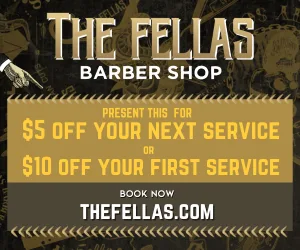Our voice is a key to our lives and so many of us take it for granted, because not everyone has a voice. Some voices sound differently from others, and I’m not talking about someone’s voice being deeper or higher, softer or louder. What I’m talking about is AAC.
AAC stands for Augmentative and Alternative Communication, and is a form of adaptive communication used by people with varying degrees of disabilities that affect their speech in a number of ways. AAC is used by about 1.5% of people worldwide, which equates to about 97 million individuals.
AAC isn’t new, but technology has improved to allow a vast range of individuals with disabilities to be able to utilize it. In fact, some of the earliest forms of AAC were sign language and Morse Code. Today, we have iPads and apps that are continually improving. Some apps like Proloquo2Go, consist of different buttons that give someone the ability to communicate their wants and needs.
There are also things called Eye Gaze Devices that are often used by individuals with low mobility who cannot push buttons on a button AAC. Eye Gaze Devices are screens that track one’s eye movement to make a selection. They often have fewer buttons and larger text and images to make it easier for the individual to use.
Another form of AAC is communication cards. These can vary in a lot of ways but they generally consist of a number of cards with words or phrases an individual can use to communicate.
We are fortunate to live in a world where there are a wide variety of ways for people to communicate. Doors are now being opened for those who might not have been able to experience what it’s like to carry on a conversation with another or share ideas. Even though the technology to communicate in various ways is readily available, it’s still important to talk about these things and get the tools in front of those who need them.
As an educator, I have witnessed how positively life changing having access to these tools can be. Adversely, I have also witnessed what can happen to those who don’t have the ability to communicate effectively. In fact, three in five children with disabilities are bullied compared to one in five kids without. My goal is to bring those numbers to zero by giving access to effective communication tools.
But it first starts with awareness. As an officer for a club called Educators Rising, I am passionate about putting AAC in front of those who can benefit from it, as well as those who have the means to help get these products to those in need. Recently several educators and I participated in a state competition. As part of the competition, I chose to focus on AAC because it is so important to me. I care because I have seen it change lives, little by little, button by button. I have friends who use AAC who I have watched learn to communicate and it is an amazing thing to see. Their access to communication means the world to me – and them because we can form a stronger bond when we can communicate.
As my efforts have continued to increase, I have come up with what I call Project Talk About It. I believe that everyone has a voice, and that voice deserves to be heard. I hope for something beyond the barriers created by our traditional form of communication. I see the light, the thoughts, the wheels turning, and the ever-growing frustration that these people who can’t use their voice feel boiling up inside of them. I want to help give them that voice.
I am working closely with families who have children who use AAC to help further their skills and understanding to open up better opportunities for them. I am also working with Spanish Fork City with the goal of getting static communication boards put into local parks. I also want to help individuals that use AAC find meaningful jobs in our community.
If you are interested in helping with one of these things through funding, product donation, job opportunities, or if you are interested in participating, you can contact the project email project.talkaboutit2025@gmail.com or follow the project on Facebook @Project Talk About It and send a message.
Your support in the project will make all the difference in how far it can go.



